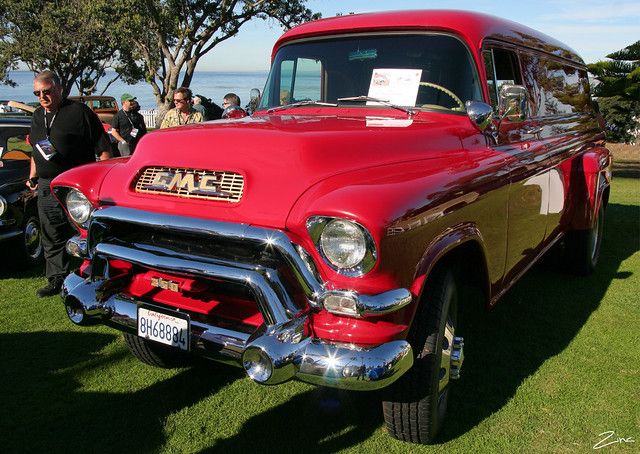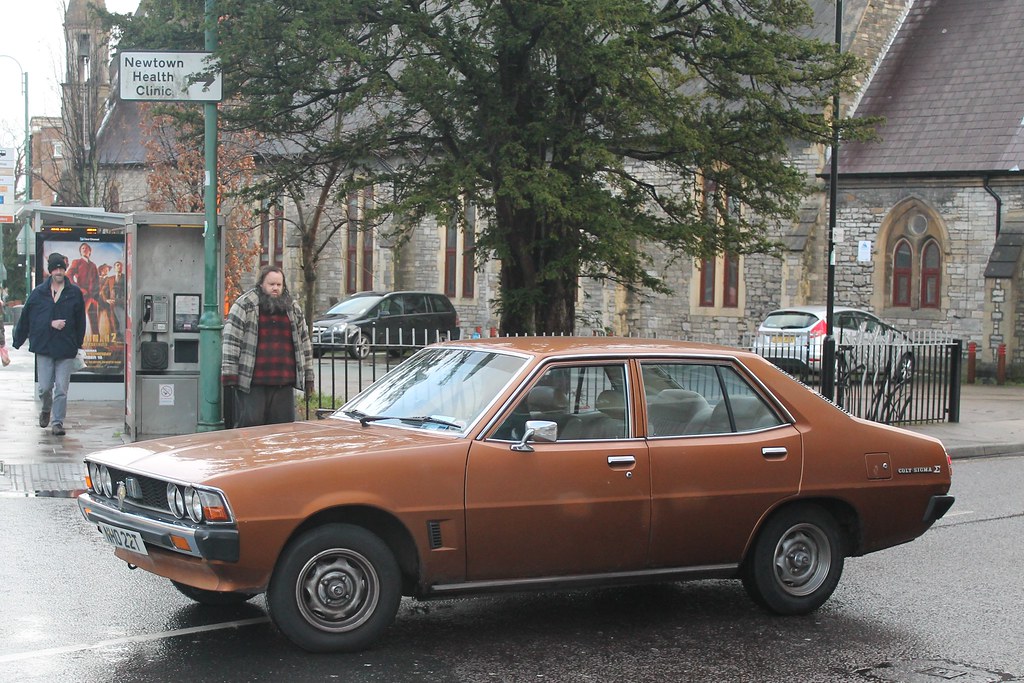
Alright, buckle up, gearheads, because we’re about to take a wild ride back to the 1990s! If you thought the muscle car era was a distant memory after the turbulent 70s and 80s, think again. The Nineties weren’t just about grunge bands and dial-up internet; they were a pivotal decade that saw the roaring, tire-smoking return of American performance machines in a way no one quite expected. It was a glorious time when horsepower wasn’t just a number, it was a lifestyle, and the asphalt track was its kingdom!
After the painful ’70s, which saw the demise of high horsepower engines and fast, affordable models, the ’80s brought hope to muscle car aficionados. The power levels slowly started to rise and the cars looked better and were faster. The U.S. market faced fierce competition from foreign models and hot hatches, but our American manufacturers? Oh, they didn’t just stand there; they fought back, constantly producing new and improved versions of the beasts we loved.
So, as the ’80s faded with a promise whispered to U.S. drivers, the ’90s burst onto the scene, ready to fulfill that promise with a vengeance. American performance didn’t just return; it exploded back in full force, presenting several interesting and highly influential models that practically earned classic car status overnight. The muscle car culture wasn’t just resurrected; it reclaimed its previous glory, helping American car manufacturers regain their dominant position on American streets and, more importantly, in the beating hearts of car lovers across the globe. Get ready, because we’re diving into the absolute kings of that era!

1. **The Chevrolet 454 SS: A Truck with a Muscle Car Soul**Imagine this: after nearly two decades where safety and environmental laws had squeezed the life out of high-compression engines, leaving us with slow, unassuming performances, something incredible started to happen. U.S. car manufacturers finally said, “Enough is enough!” and began churning out faster, more powerful models. This wasn’t just a trickle; it was a flood, a glorious wave of new-found performance that even swept through the pickup truck market. Every major pickup brand suddenly had its own fast model, a special version, or a coveted limited edition. But among them, one beast stood out, menacing and mighty: the legendary Chevrolet 454 SS.
The genius behind the Chevrolet 454 SS was delightfully simple, yet utterly revolutionary: take the biggest available engine and cram it into the lightest full-size truck. It was pure muscle car philosophy, but in a pickup truck wrapper! Chevrolet’s engineers, those clever devils, took an ordinary 1990 Chevy 1500 pickup truck, slapped on the short bed option for maximum agility, and then shoehorned in a massive 454 V8 engine. We’re talking about an enormous 7.2-liter V8 under the hood!
Now, you might look at its initial horsepower figure, ranging from just 230 to 255 HP, and think, “Is that it?” But hold on to your hats, because horsepower isn’t the whole story here. This beast churned out a staggering 385 lb-ft of torque! That’s the kind of twisting power that didn’t just move the truck; it made it absolutely fly down the road, effortlessly launching with a ferocity that belied its truck-like appearance. It was a true asphalt king, ready to conquer any challenge.
Chevy didn’t just pull this big block engine out of thin air; they borrowed it directly from their heavy-duty truck lineup. This wasn’t just about raw power; it also meant the 454 SS was a durable, robust machine, built to last and take a beating. Sure, it was a bit thirsty, but who cares about fuel economy when you’re driving a piece of history that delivers this much adrenaline? On the outside, the 454 SS was a masterclass in understated cool. No wild graphics, no flamboyant color choices – just pure, unadulterated menace. While there was a model designation proudly displayed on the back of the bed, its most striking visual difference was a sleek blackout front grille, a subtle hint at the immense power lurking beneath.
With its incredible torque and robust engine, the Chevrolet 454 SS wasn’t just a truck; it was a statement. It was a declaration that American performance was back, not just in traditional coupes, but in every form imaginable. This truck proved that the muscle car spirit could thrive anywhere, bringing the thrill of high-octane performance to a whole new segment of drivers and setting a benchmark for what a performance pickup could truly be. It was, without a doubt, one of the most exciting and influential models to emerge from the 90s muscle car renaissance.
Read more about: Hollywood’s Need for Speed: Unpacking Tom Cruise’s Epic Supercar Collection

2. **The Resurgence of Two-Door Muscle Coupes: Back with a Vengeance!**While the 90s certainly expanded the muscle car playbook to include trucks, sedans, and even SUVs, let’s not forget where it all began: the two-door coupe. This was the traditional heartland of muscle, and after a couple of quieter decades, the 90s saw these classic powerhouses roar back onto the scene, stronger and more refined than ever. These weren’t just cars; they were statements, meticulously crafted machines designed to dominate the streets and capture hearts.
The context reminds us that the 90s marked the “full return of American performance machines.” This resurgence wasn’t just about introducing new types of muscle; it was about rejuvenating the iconic forms that defined the genre. The two-door muscle coupe, with its aggressive stance and streamlined silhouette, became a canvas for automakers to showcase just how far they’d come in delivering exhilarating power and handling, proving that the classics could still lead the charge.
Drivers in the 90s were hungry for that raw, unadulterated feeling of power, and these coupes delivered in spades. Gone were the compromises of the previous decades; in their place were vehicles designed to push boundaries. Automakers invested heavily in engineering, creating engines that delivered formidable horsepower and torque, paired with chassis setups that finally offered a balanced and thrilling driving experience. It was about pure driving pleasure, enhanced by decades of automotive innovation.
These weren’t just performance machines; they were cultural icons. They graced magazine covers, dominated drag strips, and became the stuff of dreams for a generation of car enthusiasts. The blend of classic muscle car aesthetics with modern engineering made them irresistible. Each rev of the engine, each burst of acceleration, was a testament to the fact that the spirit of American muscle was not just alive, but thriving, burning brighter than ever in the sleek, powerful forms of these two-door legends.
The two-door muscle coupes of the 90s proved that while the muscle car portfolio was expanding, the original formula was far from forgotten. They represented a perfect fusion of heritage and innovation, delivering the kind of thrilling performance that earned them a permanent spot in the pantheon of classic cars. They were the undisputed kings of the asphalt, reminding everyone why the coupe had always been the ultimate expression of American muscle.

3. **The Unexpected Power of Muscle Sedans: Family Cars with a Secret**Hold up, did someone say muscle car sedans? That’s right, the 90s absolutely shattered traditional muscle car conventions, proving that a family-friendly four-door could pack just as much punch as its two-door cousins. This was a game-changer, expanding the very definition of what a muscle car could be and bringing high-octane excitement to a whole new demographic of drivers. Suddenly, practicality didn’t have to mean boring.
The context explicitly states, “For the first time in history, there were proper muscle car sedans.” This wasn’t just a slight bump in power for a standard sedan; these were purpose-built machines designed to deliver legitimate muscle car performance. Automakers took the spirit of power and speed and injected it into a more versatile, everyday package, creating vehicles that could drop the kids off at school and then dominate a winding road with equal ease. It was pure genius.
These muscle sedans were the ultimate sleepers, blending into traffic with their four doors but hiding ferocious engines and performance upgrades beneath their unassuming exteriors. They offered a thrilling combination of comfort, space, and blistering speed, making them incredibly appealing to those who needed more than just a weekend toy. This expansion of the muscle car portfolio proved that true performance could be found in unexpected places, challenging perceptions and broadening horizons.
The engineering prowess behind these sedans was impressive. To take a larger, heavier platform and imbue it with muscle car DNA required significant innovation in engine design, suspension tuning, and overall vehicle dynamics. The goal was to create a car that handled with precision and accelerated with authority, all while maintaining the comfort and convenience expected of a sedan. And the 90s muscle sedans absolutely nailed it, earning a loyal following.
So, if you remember the 90s, you remember the sheer delight of seeing a seemingly ordinary four-door sedan leave everything else in its dust. These muscle sedans were a testament to the era’s commitment to diverse performance. They proved that you could have your cake and eat it too: a practical car for daily life that transformed into an asphalt-shredding monster with a press of the pedal. They weren’t just muscle cars; they were a bold new chapter in American automotive history.

4. **The Open-Air Roar of 90s Muscle Convertibles: Sun, Speed, and Pure Freedom**Alright, if you thought the return of muscle cars was exciting with coupes and sedans, then get ready for the ultimate dose of exhilaration: the muscle car convertible! The 90s wasn’t just about raw power; it was about experiencing that power in every possible, glorious way. And what better way to feel the immense torque and hear that V8 symphony than with the top down, wind whipping through your hair? This era truly made sure that American performance wasn’t just back, but better and bolder than ever before.
The sheer sensory overload of a 90s muscle convertible was an experience unto itself. Imagine cruising down the highway, the sun on your face, the roar of a powerful engine echoing around you, and the asphalt blurring beneath. This wasn’t just driving; it was an immersion, a celebration of freedom and the open road that perfectly captured the uninhibited spirit of the decade. These machines weren’t just fast; they were portals to an adventure, making every trip a memorable, high-octane escapade.
The introduction of proper muscle convertibles further expanded the definition of what a performance vehicle could be. It wasn’t just about breaking speed records, but about offering a diverse range of ways to enjoy that undeniable American horsepower. Automakers recognized that drivers craved both blistering performance and stylish versatility, creating vehicles that commanded attention whether the top was up or down. These convertibles were a clear signal that the muscle car revival was catering to every kind of thrill-seeker, proving that there were no limits to where performance could go.
Engineering a convertible that could handle the immense power of a muscle car engine while maintaining structural integrity and thrilling dynamics was no small feat. It required innovative approaches to chassis design and suspension tuning to ensure that the open-air experience didn’t come at the cost of performance or safety. The result? A vehicle that offered the best of both worlds: the unadulterated excitement of a muscle car combined with the liberating sensation of open-top motoring. It was a testament to the ingenuity of American engineers, pushing boundaries further than anyone thought possible.
These 90s muscle convertibles weren’t just cars; they were statements. They embodied the bold confidence of an era that reclaimed its automotive glory, offering a unique blend of style, power, and the ultimate driving freedom. They stand as enduring symbols of the decade’s commitment to diversified performance, reminding us all that the muscle car spirit could be enjoyed under the open sky, making every journey an unforgettable symphony of speed and wind. They truly added another layer of cool to an already epic comeback story.

5. **The Unyielding Presence of Powerful Pickup Trucks: Utility Meets Untamed Torque**Hold up, we already talked about the Chevrolet 454 SS, right? But that iconic truck was just the beginning of a larger, truly revolutionary trend in the 90s: the full-scale emergence of *powerful pickup trucks* as a legitimate category within the muscle car universe. The context explicitly notes that “the era expanded the muscle car portfolio to other classes… For the first time in history, there were proper muscle car… pickup trucks.” This wasn’t a one-off anomaly; it was a burgeoning phenomenon, with “every pickup brand [having] its fast model, special version or a limited edition.”
This was a paradigm shift! For years, trucks were seen as workhorses, sturdy and practical, but rarely associated with raw, pavement-shredding performance. The 90s threw that notion out the window, injecting serious horsepower and torque into platforms designed for hauling. It was an exhilarating blend of utility and pure adrenaline, proving that you could have a vehicle capable of tackling tough jobs *and* leaving sports cars in its dust at a stoplight. This unexpected dual nature made them instant legends and redefined expectations.
The engineering behind these beefed-up pickups was nothing short of brilliant. Taking a larger, often heavier chassis and transforming it into a performance machine required a deep understanding of dynamics and power delivery. The focus wasn’t just on top-end speed, but on the kind of immediate, gut-punching acceleration that only immense torque can deliver. As our context reminds us about the 454 SS, a truck “chur[ning] out a staggering 385 lb-ft of torque” could “make it absolutely fly down the road.” This philosophy extended across the burgeoning performance truck segment.
These powerful pickup trucks didn’t just offer thrilling performance; they also captured the imagination of a generation. They became symbols of American ingenuity, showcasing how manufacturers could innovate and adapt the muscle car ethos to entirely new segments. They were the ultimate “sleeper” vehicles for many – looking like everyday haulers on the surface, but hiding a beastly engine ready to roar at a moment’s notice. This unexpected power made them a favorite among enthusiasts who appreciated both their practicality and their undeniable street credibility.
The legacy of 90s muscle trucks is undeniable. They paved the way for an entire subgenre of performance vehicles, proving that the muscle car spirit wasn’t confined to sleek coupes but could thrive in any form, especially one that combined brute strength with everyday usability. They weren’t just kings of the asphalt; they were trailblazers, demonstrating that “American performance returned in full force” and wasn’t afraid to shake things up, establishing a new benchmark for what a truck could truly be.
Car Model Information: 2019 Land Rover Range Rover Sport HSE
Name: Fourth generation (GMT400)
Aka: Chevrolet Silverado
Production: December 8, 1986 – 2000 (US, standard and extended cab),October 1991 – 2000 (US, four-door),1990–2002 (US, C3500HD),1991–2001 (Mexico and Venezuela),1997–2001 (Argentina and Brazil)
Platform: GMT400
Related: Chevrolet Tahoe,Chevrolet Suburban,GMC Yukon,Cadillac Escalade
Engine: Chevrolet Turbo-Thrift engine#250,straight-6
Assembly: Toluca,Mexico
Transmission: Turbo-Hydramatic#Super Turbine 400 / THM400 / 3L80 / 3L80HD,automatic transmission
Wheelbase: 117.5 in
Abbr: on
Length: 194.5 in
Width: 76.8 in
Height: 73.2 in
Designer: Donald Wood (1983)
Caption: 1995–1996 Chevrolet K1500 Silverado extended cab with Fleetside 6.5′ bed
ModelYears: 1988–2000 (standard/extended cab),1992–2000 (crew cab),1991–2002 (C3500HD chassis cab)
BodyStyle: pickup truck
Manufacturer: Chevrolet (GM),GMC Truck (GM)
Predecessor: Chevrolet C/K (third generation)
Successor: Chevrolet Silverado (first generation)
Chassis: Body-on-frame
Class: Full-size pickup truck
Layout: Front-engine, rear-wheel drive,Front-engine, four-wheel drive
Categories: All articles with unsourced statements, Articles with short description, Articles with unsourced statements from October 2020, CS1 maint: archived copy as title, Chevrolet trucks
Summary: The fourth generation of the C/K series is a range of trucks that was manufactured by General Motors. Marketed by the Chevrolet and GMC brands from the 1988 to the 2002 model years, this is the final generation of the C/K model line. In a branding change, GMC adopted the GMC Sierra nameplate for all its full-size pickup trucks, leaving the C/K nomenclature exclusive to Chevrolet.
Internally codenamed the GMT400 platform, GM did not give the model line a word moniker (e.g., “Rounded-Line series” for its predecessor). After its production, the model line would informally become known by the public as the “OBS” (Old Body Style), in reference to its GMT800 successor. In starting a different tradition, the model line overlapped production with both its predecessor and successor; the model line again shared body commonality with GM medium-duty commercial trucks.
Over nearly a 14-year production run, the fourth-generation C/K was assembled by GM in multiple facilities in the United States, Canada, and Mexico. After the 2000 model year, the fourth-generation C/K was discontinued and was replaced by the GMT800 platform (introduced for 1999); the C3500HD heavy-duty chassis cab model remained in production through 2002. In line with the GMC Sierra, Chevrolet subsequently adopted a singular Chevrolet Silverado nameplate for its full-size truck line (which remains in use).
Get more information about: Chevrolet C/K (fourth generation)
Buying a high-performing used car >>>
Brand: Chevrolet Model: 454 SS
Price: $27,489 Mileage: 77,935 mi.
Read more about: The Pinnacle of Performance: 9 Defining Pickups That Offer Unrivaled Enjoyment and Utility

6. **The Game-Changing Arrival of Muscle SUVs: Unprecedented Power for Every Journey**Get ready to have your mind blown, because the 90s didn’t just bring us muscle sedans and powerful trucks; they unleashed the ultimate wild card: the *muscle SUV*! This was truly uncharted territory, a moment when the boundaries of American performance were utterly shattered. Our context proudly declares, “For the first time in history, there were proper muscle car… even a muscle SUV.” This wasn’t just a vehicle; it was a statement, an unapologetic declaration that horsepower and adrenaline were for everyone, everywhere, no matter what kind of ride you needed.
Imagine the scene: an SUV, typically seen as a family hauler or an off-road adventurer, suddenly packing enough punch to rival sports cars. It was the ultimate contradiction, and utterly captivating! These muscle SUVs were the coolest kind of secret weapon, blending an unassuming, practical exterior with a ferocious heart. They offered a unique appeal to drivers who needed the space and versatility of an SUV but refused to compromise on the spine-tingling thrill of legitimate muscle car performance. It was a fusion that redefined expectations and created an entirely new niche.
The brilliance of the 90s muscle SUVs lay in their ability to deliver astonishing performance without sacrificing an ounce of utility. This meant families could comfortably fit everyone and their gear, and then, when the moment was right, unleash a torrent of horsepower that would pin passengers back in their seats. It was about offering a complete package – comfort, capability, and blistering speed – making the muscle car dream accessible to a demographic that traditional two-door coupes might not have reached. They truly represented the expansion of the muscle car’s reach.
Creating an SUV with muscle car credentials demanded incredible innovation from automakers. It required engineers to master complex dynamics, balancing the higher center of gravity and increased weight of an SUV with powerful engines, advanced suspension systems, and robust braking. The goal was to produce a vehicle that not only accelerated with authority but also handled with unexpected agility, turning a utilitarian machine into a genuine performance powerhouse. These weren’t just big engines slapped into big bodies; they were meticulously engineered beasts.
The muscle SUVs of the 90s stand as a monumental testament to the era’s boundless ambition. They proved that the “muscle car culture wasn’t just resurrected; it reclaimed its previous glory,” not just by refining old forms but by fearlessly venturing into new ones. These vehicles broke every mold, showing that high-octane performance could be integrated into almost any vehicle type, bringing the thrill of American horsepower to a wider, more diverse audience than ever before. They were truly game-changers, setting a thrilling precedent for generations of performance SUVs to come.
As we cruise away from the epic decade of the 1990s, it’s crystal clear that this wasn’t just a pit stop in automotive history; it was a full-throttle sprint back to glory for American muscle cars. From the roaring return of two-door coupes to the groundbreaking emergence of muscle sedans, powerful pickup trucks, and the utterly unprecedented muscle SUVs, the Nineties redefined what performance meant and who could experience it. This era didn’t just bring horsepower back; it unleashed it in new, exciting forms, solidifying American manufacturers’ dominance and cementing these incredible machines as absolute legends in the hearts of car lovers everywhere. So, next time you think of the 90s, remember it wasn’t just about the music and fashion; it was about the asphalt tracks, the tire smoke, and the unforgettable rumble of true American muscle!



